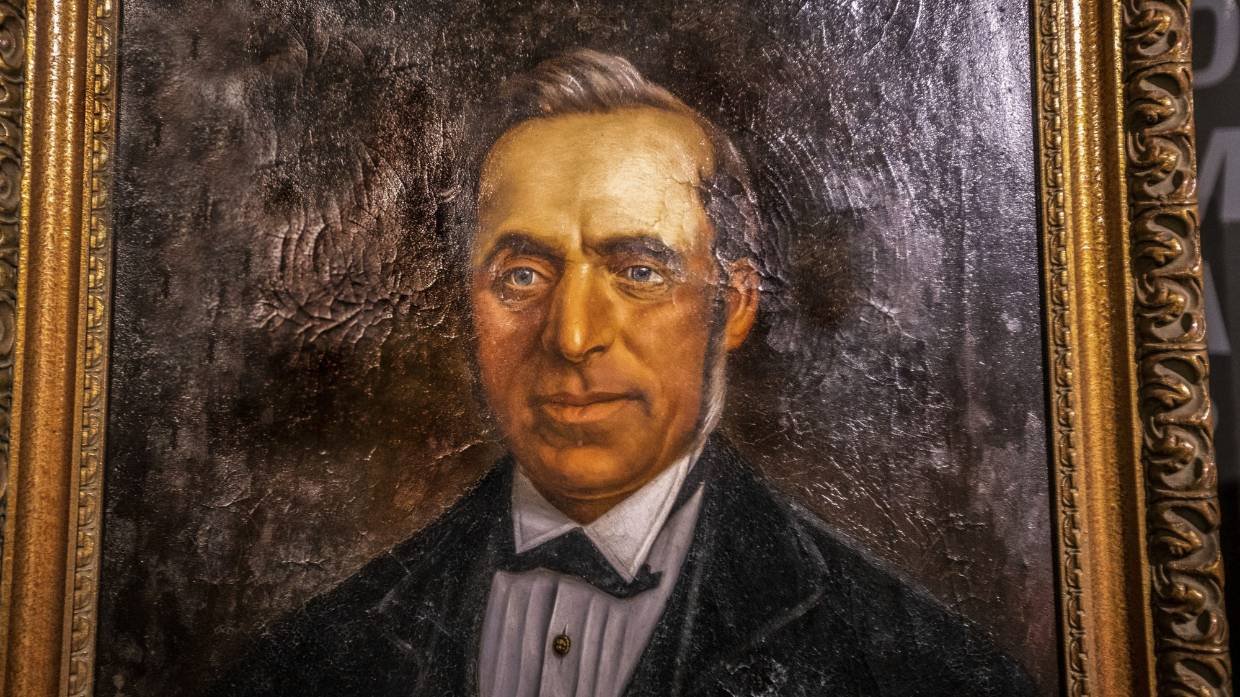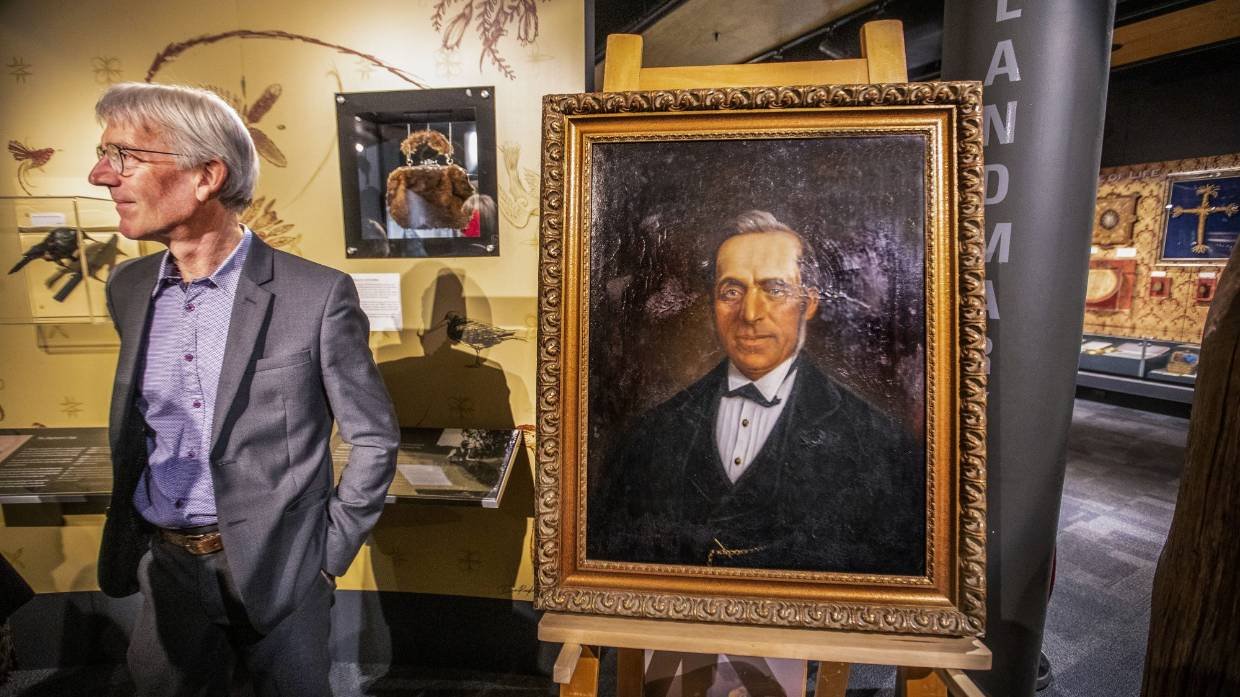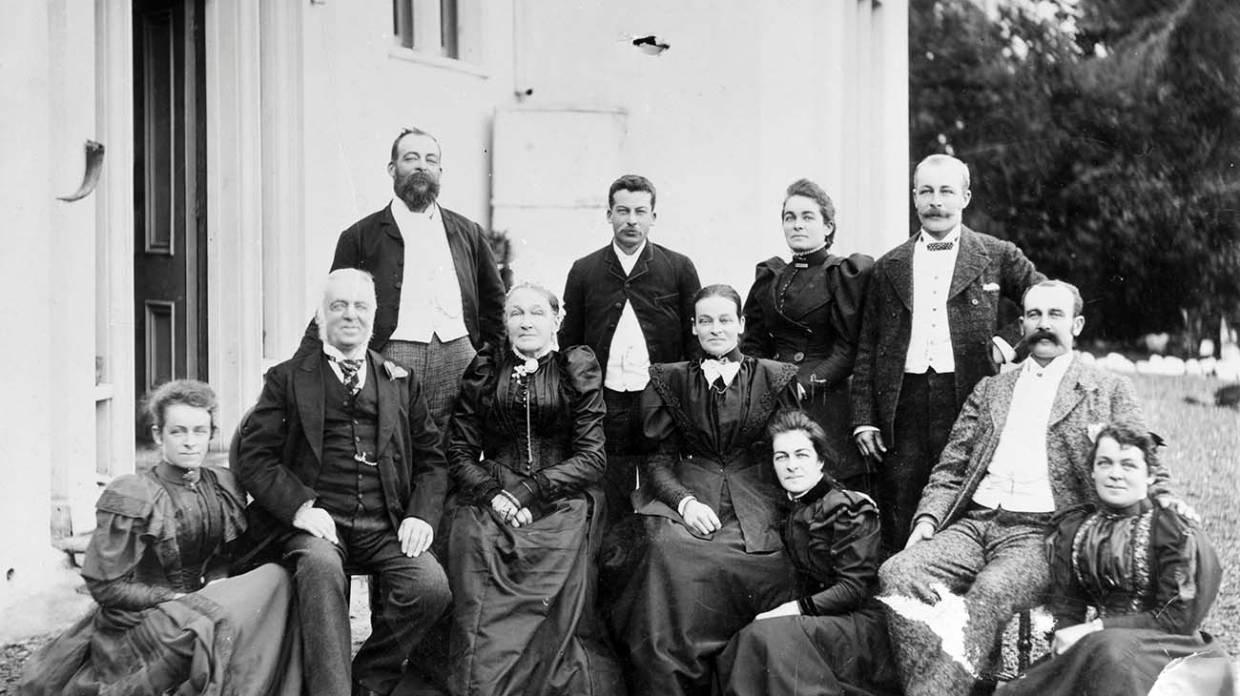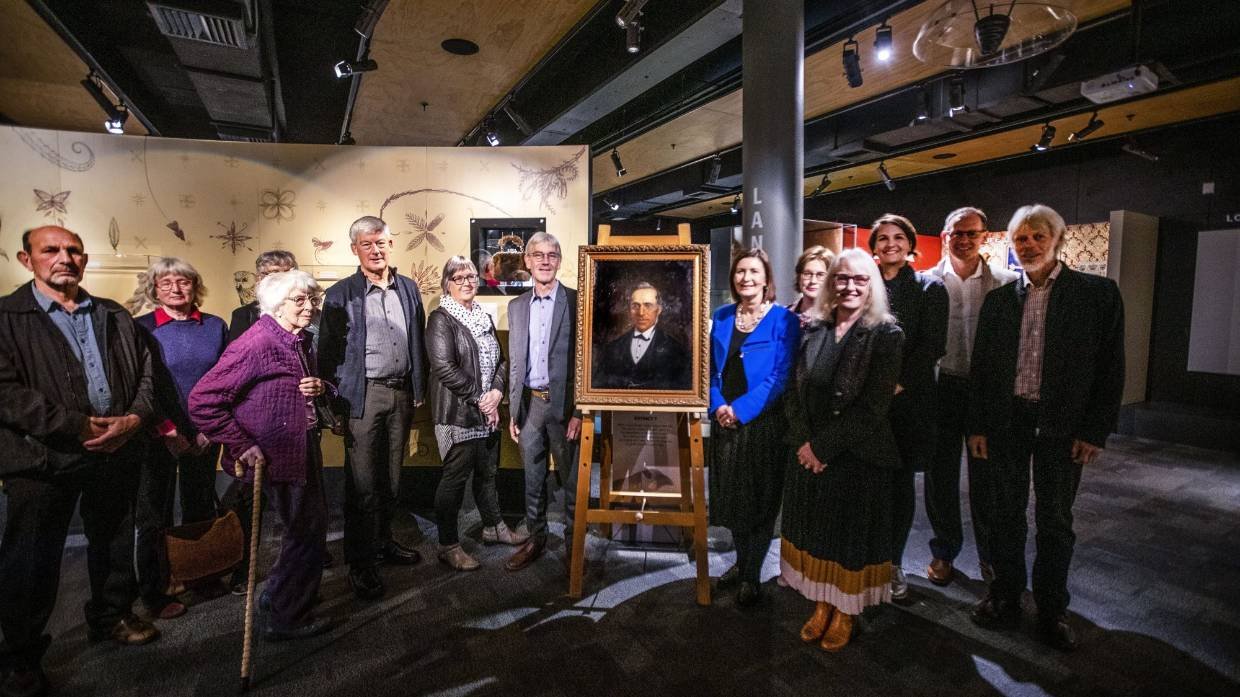145-year-old Gottfried Lindauer painting discovered hanging in family dining room, donated to museum
Greg Thompson had no idea he had a Gottfried Lindauer painting hanging in his family dining room until a family friend took notice of the portrait.
“One day we were at home, having… take-away, and Peggy said ‘who’s that painting by?’
“So we got up and had a look, reading the back, saying ‘it looks like Lin-, Lin-’ and Peggy jumped up and said ‘a Lindauer! A Lindauer!’”
The 145-year-old portrait of Edward Green, commissioned in 1875, was donated to the Nelson Provincial Museum by his great, great grandchildren on Saturday in a small ceremony. Green was a prominent early settler in Nelson, and sold his estate to the city which became the Tahūnanui recreation area.
Greg Thompson, Green’s great, great grandson, said no one was quite sure how his branch of the family came to have the portrait. For a long time they had no idea of its origins – that all changed when Peggy Jack took notice of the painting hanging in the dining room of their Queenstown home in the 1960s.
The painting had been stored in attics and hung in family dining rooms for over 100 years by the time it was donated to the Nelson Provincial Museum. The family admitted it had accidentally thrown out another Lindauer portrait, of Green’s wife, Isabella.
Nelson mayor Rachel Reese said having the Lindauer in the museum’s collection was “hugely significant”.
“I would just say to people, if you have a painting hanging on the wall and you don’t know what you have, have a look at the back, because you never know.”

The great, great grandchildren of Edward Green said the family connection for their own children was now tenuous, and the storage requirements for the painting meant it was better to give it to the museum in the town where Edward lived.
Gottfried Lindauer, born in Bohemia (now the Czech Republic) is one of New Zealand’s most well-known artists, most famous for his portraits of important Māori political figures, often commissioned by the sitter.
His paintings have been the target of art thieves and forgers and sell for hundreds of thousands of dollars. A most audacious theft of a Lindauer painting saw the ram raid of the Art Centre in Parnell, Auckland, in 2017. The paintings haven’t been recovered and the crime is unsolved.
The Edward Green portrait would have been among the first the prolific artist painted in New Zealand, having been commissioned just one year after his arrival. Lindauer came to New Zealand in 1874 to avoid being drafted into the army.
After the realisation of the true worth of their family portrait, the Thompsons had it restored to repair a small tear in the canvas.
The fate of the matching portrait of Edward’s wife, Isabella Green, is somewhat tragic. Youngest great, great grandson Richard Thompson said the family had the “dubious honour” of having thrown a Lindauer out with the rubbish.

LUZ ZUNIGA
Richard Thompson, a descendant of Edward Green, said having the portrait back where the man had lived gave him more of a connection to Nelson and to his ancestors.
The paintings were discovered in an attic by Thompson’s mother and brought out for Thompson’s grandfather’s golden anniversary, after which Edward Green’s portrait was left out in one of the family rooms, and Isabella Green’s was moved to the stairs.
Thompson’s sister, Rebecca Wakelin, took a moment to acknowledge Isabella, whose “severe” looks frightened her as a child.
“I had a great imagination, so I used to refuse to go upstairs because I thought she was a witch,” Wakelin said.

A Green family photograph already in the Nelson museum’s collection will likely be displayed alongside the Lindauer portrait. Edward Green and his wife, Isabella, are second and third from the left, front row.
Looking back, Wakelin said her looks were not really so severe, just old-fashioned. “She was in the fashion of those times, wearing dark colours and with hair pulled back from her face.”
Isabella’s portrait was eventually taken down, stored in a garage, and eventually thrown out after she was rediscovered with a significant tear in the canvas.
Nelson mayor Rachel Reese thanked the family for the donation of the painting, and acknowledged the contributions Edward Green made to the city. Green sold what was then his estate, The Sands in Tāhunanui, to the city council to turn into a recreational area.

The descendants of Nelson landowner Edward Green, to the right, with family friend Peggy Jack in purple. The family donated his portrait to the Nelson Provincial Museum on Saturday.
“The gifting of the land … was a remarkable contribution, and I had no idea about this story until this morning.
“[We have] the biggest campsite in the southern hemisphere, and now I know how that was possible, so thank you to your ancestor. The city is grateful for your contribution.”
Museum chief executive Lucinda Blackley-Jimson gifted the family members copies of several photographs of Edward Green and his family that were already in the museum’s collection.
She said the museum would likely use the other records to display alongside the portrait, like the family photographs, and a diary entry from another passenger on Green’s 1842 journey from England aboard the Lord Auckland which described him as “a little upstart of a tailor”.

This photo of Edward Green is believed to have been taken around the same time as the Lindauer portrait.
Green’s first wife, Charlotte Booth Green, died on the journey. He remarried, to Isabella Barry Smith, and had 12 children with her.
He owned several different estates in his time in Nelson, building the original Cob Cottage, now the Beacon Hill Estate, in 1852, 10 years after arriving in the country.
In 1867 he became a land-owning farmer, which great, great granddaughter Wakelin said could explain the pale forehead of the portrait: though he would have worked outside, he would have always worn a hat.
Edward Green died in 1896, aged 78. He is buried in Wakefield cemetery, along with Isabella who died in 1904. They were survived by 11 of their children.
Credit: Skara Bohny, Stuff

My research, as a great grandson of Edward records Edward’s burial in the Nelson Evening Standard on the 1 October, 1896 at Wakapuaka Cemetery. As well he owned the very large Upcot Station adjacent to Molesworth in the Awatere Valley, Marlborough for 33 years. Really blown away with your work on his portrait. Barrie Green.